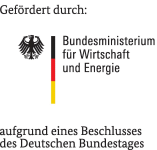The aim of the SVA sub-project is to take noise reduction measures into account in the propeller design for transverse thruster systems and to quantify the noise reduction achieved by means of hydroacoustic measurements.

| Title: | Quiet transverse thrusters – Reducing the sound emission of transverse thrusters with methods of active vibration reduction SVA: Hydroacoustically optimised transverse thruster propellers and noise prediction |
| Term: | 12/2020 – 11/2023 |
| Project Manager: | Rhena Klose |
| Founding: | Federal Ministry for Economic Affairs and Energy |
| Project administration: | Project Management Jülich |
| Partners: | Jastram GmbH & Co. KG, University of Rostock (chairs LEMOS and ITU), Promarin Propeller und Marinetechnik GmbH, Wölfel Engineering GmbH & Co. KG |
| Reg.-No.: | 03SX530C |
With its know-how in propeller design, SVA is striving to develop a propeller design with high efficiency and reduced cavitation expansion and thus low noise radiation. This concerns both the sound propagation into the hull itself and the sound radiation into the sea. The engineering tools for determining the operating parameters in the propeller design phase are to be validated. The suitability of the potential theory propeller design and optimisation methods (VORTEX, panMARE) for the calculation and optimisation of transverse thruster propellers is to be determined.This will enable systematic calculations regarding the influence of geometry changes of the transverse thruster propeller on the risk of cavitation. Supplementary CFD calculations support the final determination of the propeller geometry.
Various propeller designs are to be investigated in detail by means of model tests with regard to their characteristic values, cavitation risk and noise radiation, which arevalidated and quantified by CFD calculations. In order to be able to quantify the noise reduction, acoustic measurements in the cavitation tunnel with the transverse thruster system (propeller in the transverse channel) are necessary. Challenges are posed by the limited dimensions of the entire transverse thruster system with the transverse channel and the associated strong sound reflections. Intensive metrological investigations as well as boundary element calculations (BEM) are required to determine the source levels which are necessary for a comparison and transfer to the full-scale design.
With regard to future regulations in the form of sound level limits, a reliable scaling to the sound levels of the full-scale system must be guaranteed. To this end, the procedures for converting the model scale sound spectra to full-scale and for predicting the sound level spectra of the transverse thruster system in the far field of the manoeuvring ship must be further developed and validated. Full-scale measurements under laboratory conditions serve to derive conversion rules from the model to the full-scale sound level spectra.